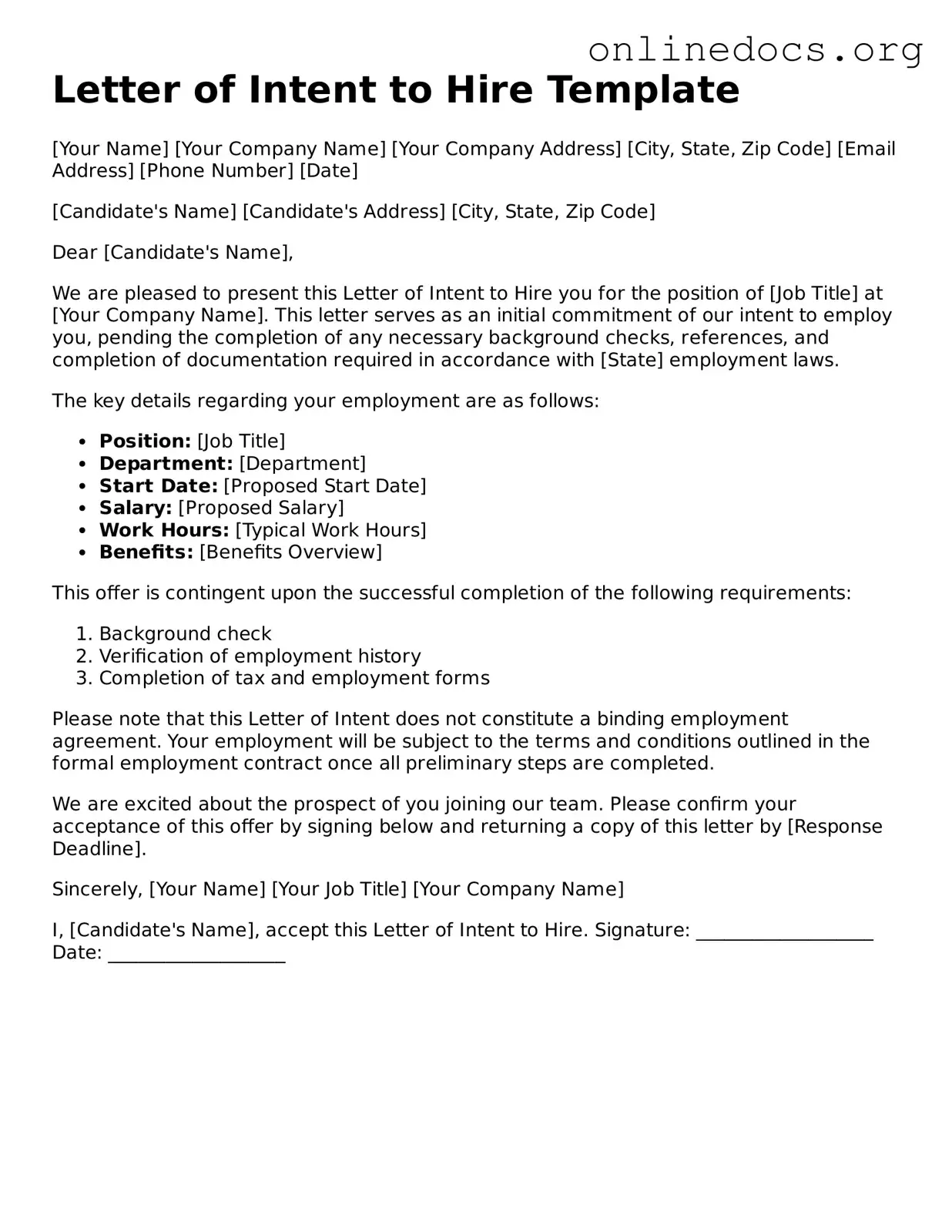The Letter of Intent (LOI) is similar to a Memorandum of Understanding (MOU). Both documents outline the intentions of the parties involved and serve as a preliminary agreement. An MOU is often less formal than a contract but still indicates a serious commitment to move forward with negotiations. It can cover various aspects of a potential partnership or project, making it a useful tool for clarifying expectations before entering a more binding agreement.
Another document that resembles the LOI is the Offer Letter. An Offer Letter is a formal document sent to a candidate that outlines the terms of employment, including job title, salary, and benefits. While the LOI expresses the intention to hire, the Offer Letter solidifies that intention by providing specific details. Both documents aim to set clear expectations, but the Offer Letter typically represents a more definitive step in the hiring process.
Understanding the nuances of the California Homeschool Letter of Intent is essential for parents embarking on the homeschooling journey, as it is a document they must submit to officially inform the state of their intention to homeschool their children, ensuring compliance with educational regulations. For additional information regarding this important form, visit hsintentletter.com/california-homeschool-letter-of-intent-form/.
A Non-Disclosure Agreement (NDA) shares similarities with the LOI in that both documents are often used in the early stages of a business relationship. An NDA protects sensitive information shared between parties, while the LOI signals a mutual interest in working together. Both documents help establish trust and set the stage for future collaboration, ensuring that both parties feel secure as they move forward.
The Term Sheet is another document akin to the LOI. It summarizes the key points of a potential agreement between parties, often in a bullet-point format. Like the LOI, a Term Sheet serves as a starting point for negotiations. It outlines important terms, such as pricing, timelines, and responsibilities, allowing both parties to align their expectations before drafting a formal contract.
A Partnership Agreement also bears resemblance to the LOI. This document outlines the terms and conditions under which two or more parties will work together. While the LOI expresses the intention to form a partnership, the Partnership Agreement formalizes that intention by detailing roles, contributions, and profit-sharing arrangements. Both documents are essential in establishing a clear understanding between the parties involved.
The Intent to Bid document is similar to the LOI in that it signals a party's intention to participate in a bidding process. This document often outlines the bidder's qualifications and interest in the project. Like the LOI, the Intent to Bid helps set the stage for further negotiations and demonstrates a commitment to pursuing the opportunity, although it is specifically focused on competitive bidding.
A Statement of Work (SOW) can also be compared to the LOI. An SOW outlines the specific tasks, deliverables, and timelines for a project. While the LOI indicates a general intention to collaborate, the SOW provides detailed information on how that collaboration will take shape. Both documents serve to clarify expectations and responsibilities, helping to ensure that all parties are on the same page.
The Engagement Letter is another document that has similarities with the LOI. This letter is often used in professional services, such as legal or consulting work, to outline the scope of services to be provided. Like the LOI, it establishes a mutual understanding between the parties. However, the Engagement Letter often includes more specific details about the services, fees, and timelines, making it a more binding commitment.
Lastly, the Preliminary Agreement is akin to the LOI in that it outlines the basic terms and intentions of a future contract. This document serves as a foundation for further negotiations and helps both parties understand the general framework of their potential agreement. Similar to the LOI, the Preliminary Agreement sets the stage for more detailed discussions and eventual formalization of the relationship.
